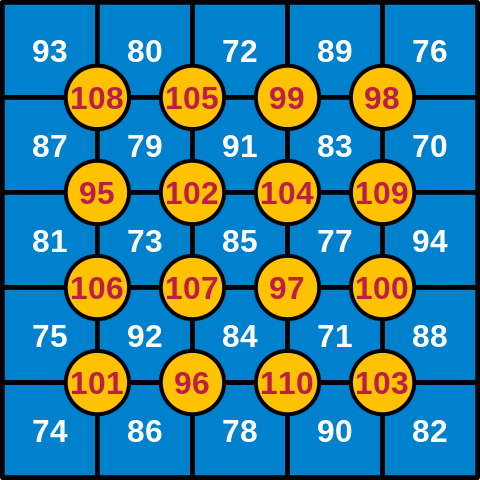
This style of compound magic square was first devised by Kenneth Kelsey of Great Britain. The numbers 70-94 appear in the blue boxes, making a pandiagonal magic square. The numbers 95-110 appear in the yellow circles, making a pandiagonal magic square of their own. And embedding one in the other produces a compound square — the numbers in the circles can be added to the numbers in the squares in either of the adjoining sections. So, for example, the second row, 87 + 79 + 91 + 83 + 70 = 410, can include the row of circles above it (87 + 108 + 79 + 105 + 91 + 99 + 83 + 98 + 70 = 820) or below it (87 + 95 + 79 + 102 + 91 + 104 + 83 + 109 + 70 = 820).
In the finished figure, every number from 70 to 110 appears once, and the blue square and the yellow square have the same magic constant — 410!
